Campsis ‘Trumpet Vine’ Propagation, Pruning And Training Rules To Follow
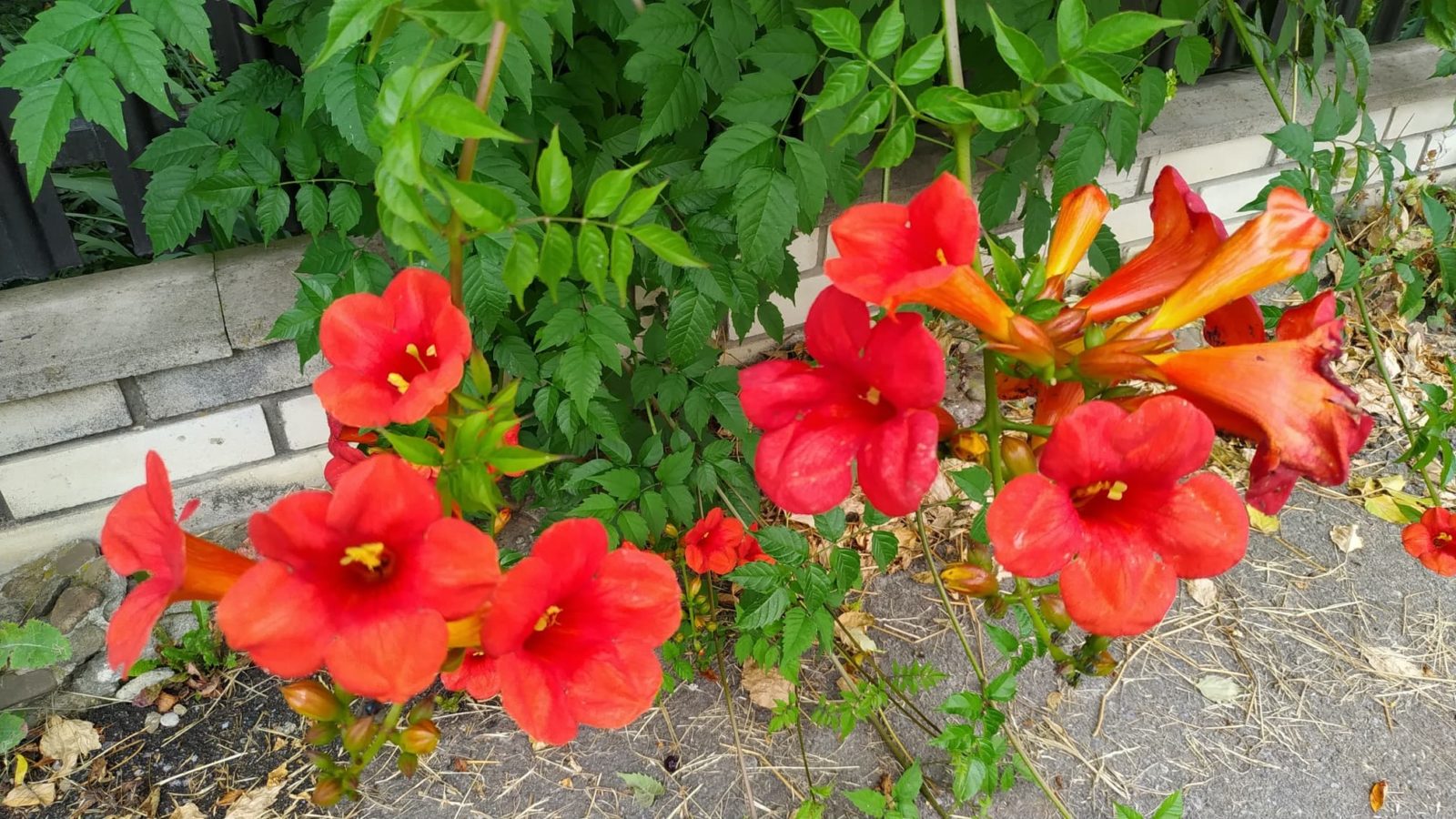
CLIMBERS > CAMPSIS
Chris is a gardening writer and nature enthusiast. He graduated from Oxford Brookes University in 2022 with an MA in Psychology. Chris works with the Leeds Green Action Society, helping their food cooperative by growing various fruit and vegetables on their two allotments in Hyde Park, Leeds.
Reviewed By COLIN SKELLY

Colin is a Horticulturist and Horticultural Consultant with experience in a range of practical and managerial roles across heritage, commercial and public horticulture. He holds the Royal Horticultural Society’s Master of Horticulture award and has a particular interest in horticultural ecology and naturalistic planting for habitat and climate resilience.
CAMPSIS GUIDES
With anywhere from one to a handful of words, a name can encapsulate the exact features and qualities that make a plant unique; that stand it out from the crowd.
And when you look at Campsis radicans – most commonly known as the ‘Trumpet Vine’ – it’s easy to see why we think the plant belongs firmly in this hallowed category of perfectly named plants.

An elongated throat holds the petals far away from the stem where they open proudly, resembling the brass bell that distinguishes the end of a trumpet.
Thanks to its stunning aesthetic qualities – we’re talking about the intriguing shape and the bold colours – the trumpet vine has become a popular addition to British gardens since it was found by colonists in Virginia and brought home to Blighty.1Campsis radicans. (n.d.). Global Biodiversity Information Facility. Retrieved March 13, 2023, from https://www.gbif.org/species/144104315
Overview
| Botanical Name | Campsis |
| Common Name(s) | Trumpet Vines |
| Plant Type | Climbers & Vines |
| Native Area | Americas |
| Hardiness Rating | H4 |
| Foliage | Deciduous |
| Flowers | Trumpet-shaped |
| When To Sow | January, February, March, November, December |
| Flowering Months | July, August, September |
| When To Prune | March |
Sunlight
Preferred
Full Sun
Exposure
Sheltered
Size
Height
8 – 12M
Spread
2.5 – 4M
Bloom Time
July – September
Soil
Preferred
Most (aside from heavy clay)
Moisture
Moist but well drained
pH
Any
This plant is in the family Bignoniaceae, and as we just alluded to, is native to America.2Bignoniaceae. (1999, July 23). Encyclopedia Britannica. Retrieved March 13, 2023, from https://www.britannica.com/plant/Bignoniaceae
Its hardiness has allowed it to establish itself in many places around the world.
Being a vine, Campsis radicans grow enthusiastically, and puts out numerous tendrils that do their best to attach themselves to any surface in the vicinity.
Because of this wild growth, trumpet vine is considered to be invasive by some gardeners and authorities.3Trumpet creeper: Campsis radicans. (n.d.). Invasive Plant Atlas of the United States. Retrieved March 13, 2023, from https://www.invasiveplantatlas.org/subject.html?sub=5258
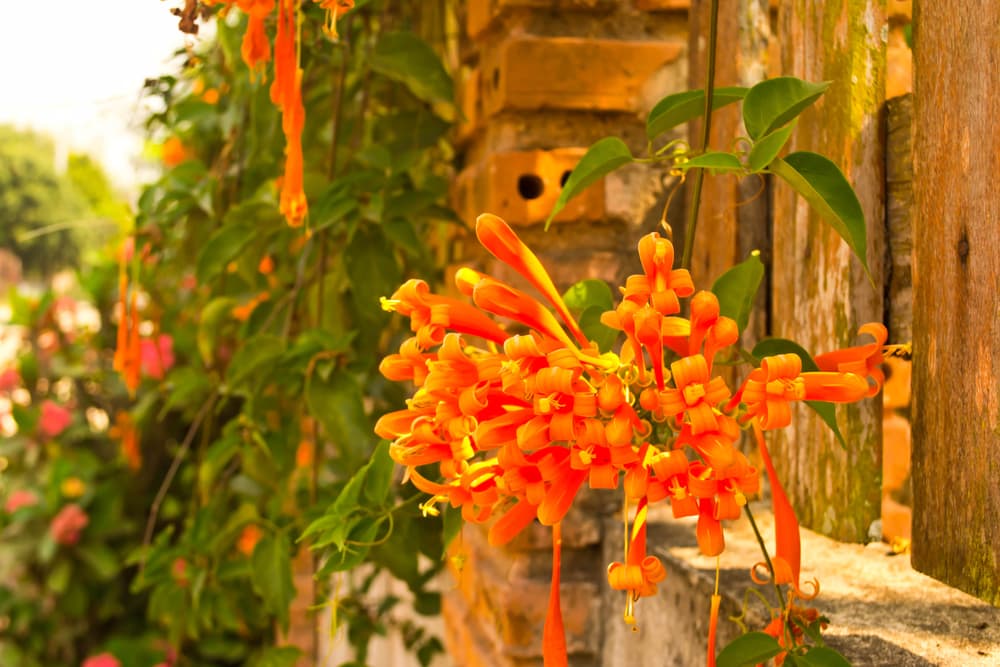
With this in mind, we recommend remaining vigilant if you decide to grow it.
How To Grow Trumpet Vines
Where To Grow
As a vine, Campsis will grow well against a wall or structure, like a trellis.
If you’re concerned about your plant getting unruly you may find more peace of mind growing in a container, where you can be sure that you can keep things contained if need be.
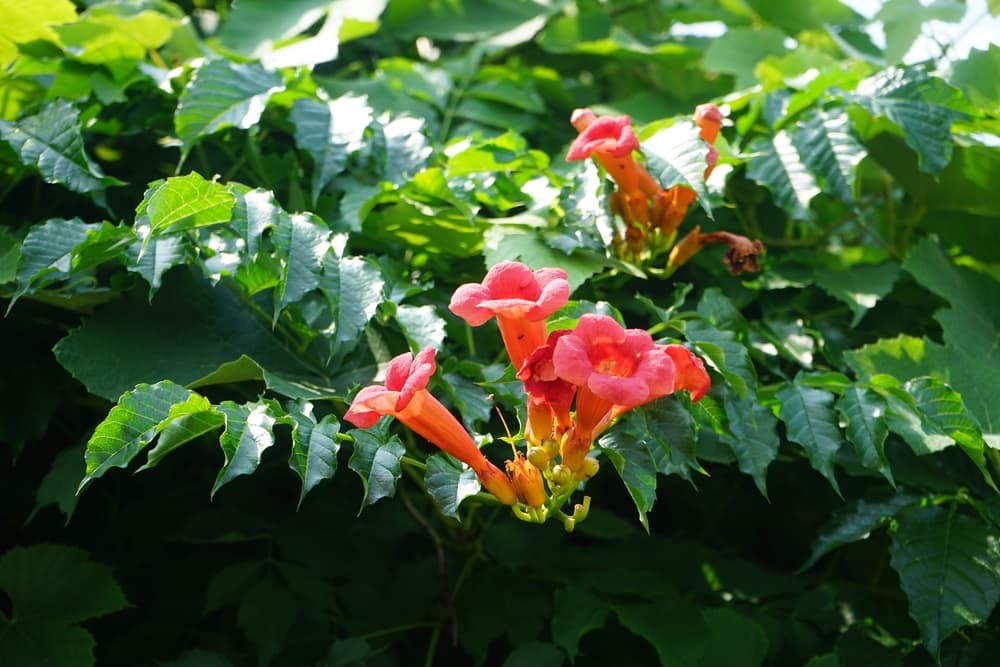
Regardless of your decision whether to plant in the ground or a container, find a spot that’s warm and sunny.
This plant requires shelter from the elements, especially cold wind, and strong sunlight is needed to help ripen its stems into wood.
Sowing From Seed
It’s possible to grow trumpet vine from seed, although this is not considered the optimal method.
Choose potting compost, or mix organic matter with your garden soil – then fill a container and sprinkle the seeds on top.
Check the seed packet for information on how much space to leave between them as this can vary between types.

Add another thin layer of soil on top of the seeds, and then water well.
For best results, leave your trumpet vine container in a place that will get good amounts of light and heat – a windowsill or greenhouse is usually a good bet.
You can cover the pot with a clear plastic bag, making sure to put a stake in the soil to keep the plastic away from the surface.
This will trap heat and moisture, creating conditions that are conducive to germination.
Propagating From Cuttings
To propagate a trumpet vine, simply trim 7.5-10cm from the suckers or shoots of an existing plant.
Plant the cutting and keep it moist, and you should see new growth within a few weeks.
Nurture the plant until it’s strong enough to plant outside, then prepare to plant out.
Pruning & Training
As a keen vine, Campsis will demand more of your time than some other plants.
In the early years this involves training your plant, to encourage the development of a solid framework that will be the basis for future growth.
Once your plant is established, attention turns toward keeping it in check with a thorough pruning regime.
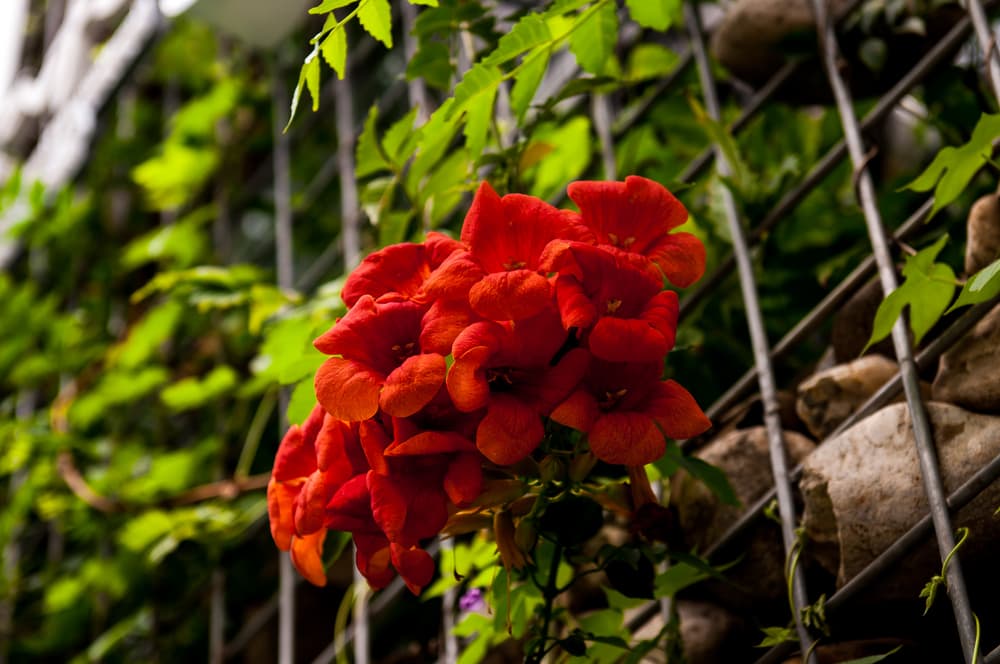
Then, once a plant is mature, you can renovate it to promote new shoots.
Here’s a little information on each –
Trumpet Vine Training
By taking the time to train your vine in the early months, you can lay the groundwork for manageable and aesthetically pleasing coverage.
Choosing the right support and encouraging your plant to grow as desired leaves more space, achieves more balanced growth, and makes it easier to care for going forward.
The first step involves choosing a support; this can include wires, trellises, screens, and others.
“When considering support for a climber, remember that you might have it for some time,” says Master Horticulturist Colin Skelly.

“I tend to prefer wires over timber trellises because timber will not last as long and is tight to walls, whereas wires create more space between the wall and the climber.
“Sometimes though, timber is the right choice for the job aesthetically.”
Remember when planting out that you need to leave space between your plant and the support (typically 25-50cm) to prevent the support from blocking rain from reaching the plant.
If you’re growing trumpet vine from seed, a pyramid frame of short canes is a good starting point.
Manually wrap the vines around the canes, tying them on to keep them separate.
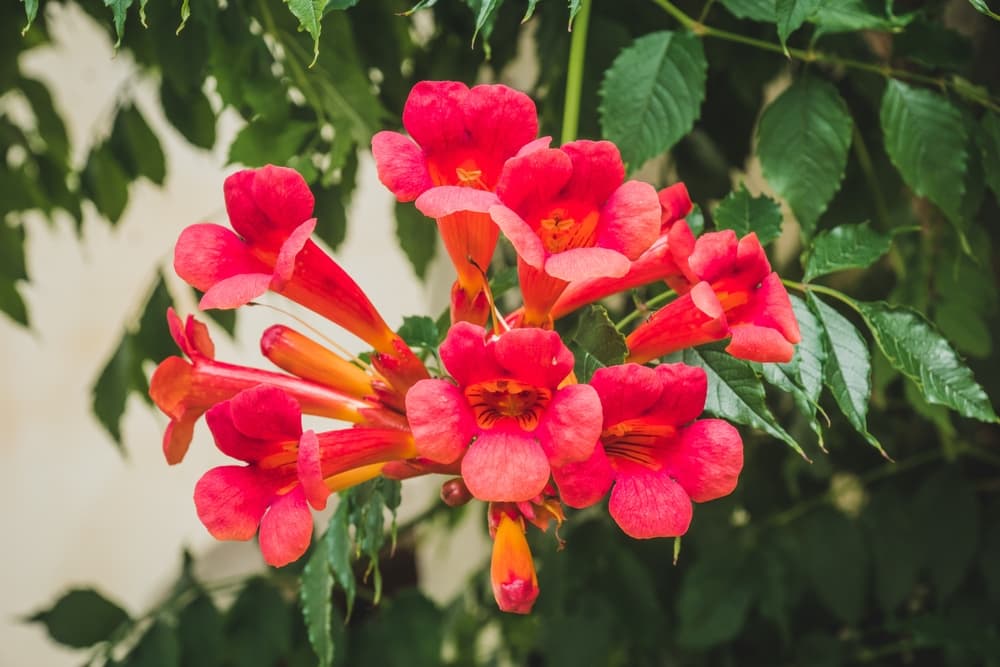
Remember that you’ll need to untie them to move them to the permanent structure when they’re ready, so leave space and don’t tie knots too tight.
Instructions for the next step vary between the type of support chosen, but the general idea is to train your vines onto the structure in a way that promotes neat and tidy growth.
Where necessary make sure the structure is firmly attached to a wall, as the weight of a mature plant may pull it down otherwise.
Remove weak shoots during the training process to help your plant stay as strong as possible.
Pruning Guidelines
The goal of pruning is to keep a mature plant in optimal condition, both in terms of health and appearance.
By investing time and effort here you can help your trumpet vine to remain fully resplendent.

At the end of each growing season cut back side shoots so that they only reach a couple of buds beyond the main stem.
Get rid of weak growth, and if any stems are damaged, trim them back close to the base of the plant.
Renovating Established Vines
If your trumpet vine is looking a little old and dishevelled, you can do a ‘hard reset’, as it were.
To do this, trim all of its shoots back to about 30cm in height, and retrain as you would with a new plant.
Plant Care
Watering
Trumpet vines aren’t overly thirsty compared to some others, but will benefit from being watered in dry periods.
This is true whether your plant is newly-established or well-established, and whether it’s growing in the ground or a container.
Fertilising
If your trumpet vine is growing in the ground, add fish, blood, and bone fertiliser in spring.
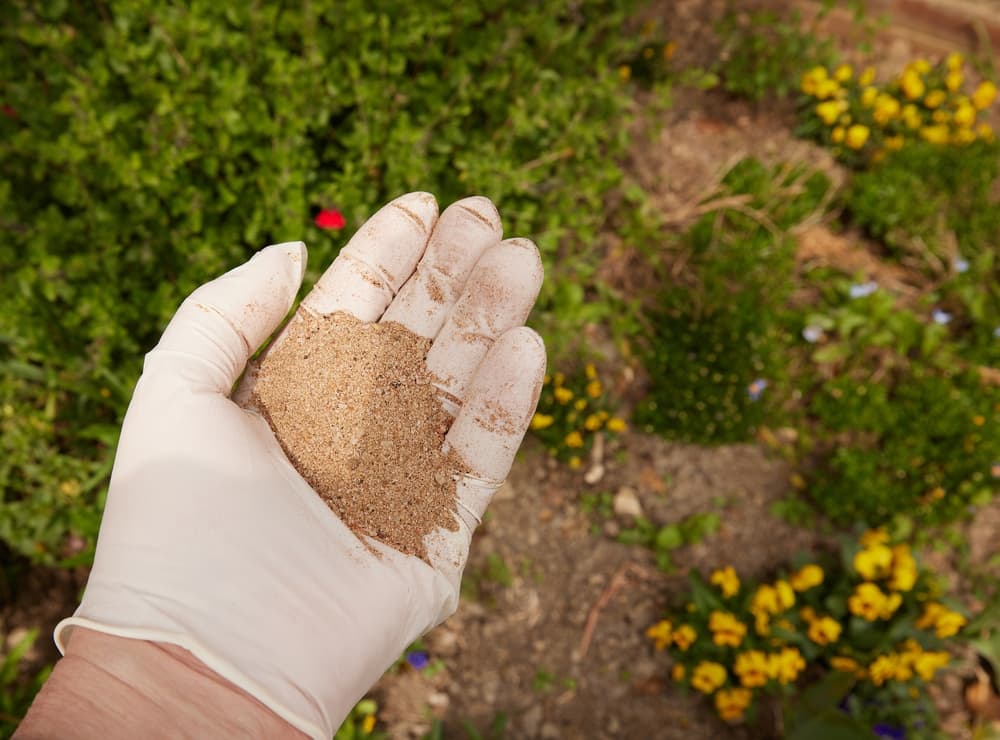
Check the packet for details on the amount to use, as this will vary based on the size of your plant.
In a container, traditional liquid plant feed should do the trick.
Generally, trumpet vine doesn’t require too much feeding unless the soil is particularly low in nutrients.
Feeding each year will encourage stronger growth, nonetheless.
Common Issues
There’s not much that’ll get in the way of this energetic plant and its ambition to grow as far and wide as possible.
Here’s information on a couple of things that could disturb healthy growth, just in case –
Bud Drop
This refers to a phenomenon where buds drop off of a plant before opening, and can indicate that your trumpet vine is in a poor location.
One thing to check is soil acidity – this plant can tolerate a wide range from mildly acidic through to mildly alkaline – but do check for any deviation beyond that range.

If soil acidity is ok but your buds are still dropping, it may be the case that the soil is too wet.
Check for overly-moist, potentially boggy soil; if you find it, add organic matter or leaf clippings to shift the moisture ratio to something more favourable.
If you’re still encountering issues, check whether the vines are growing too tangled.
If so, try to tease them apart and consider pruning back some of the weaker ones.
Pests
Aphids, scale insects, and mealybugs are prone to visit trumpet vine as a source of food.
Sadly these visitors cause damage to any plant – leaving blemishes, brown spots, and potentially even killing off sections off if left unchecked.

Keep vigilant, and look for any bugs that are visible to the naked eye.
If you find any, remove by hand and check back to make sure they don’t return.
Should they return, pesticide is often the next course of action – different products are recommended depending on the type of insect and the scale of the infestation.
References
- 1Campsis radicans. (n.d.). Global Biodiversity Information Facility. Retrieved March 13, 2023, from https://www.gbif.org/species/144104315
- 2Bignoniaceae. (1999, July 23). Encyclopedia Britannica. Retrieved March 13, 2023, from https://www.britannica.com/plant/Bignoniaceae
- 3Trumpet creeper: Campsis radicans. (n.d.). Invasive Plant Atlas of the United States. Retrieved March 13, 2023, from https://www.invasiveplantatlas.org/subject.html?sub=5258
